

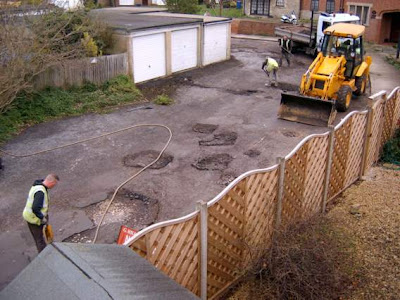
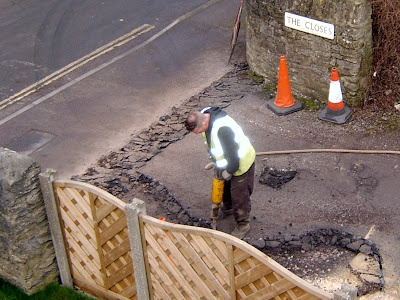
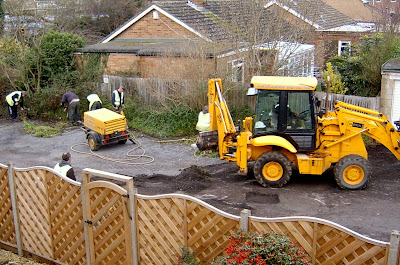





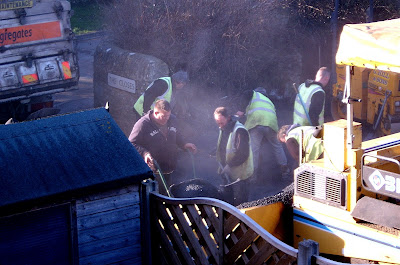
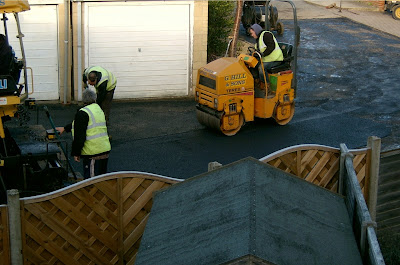

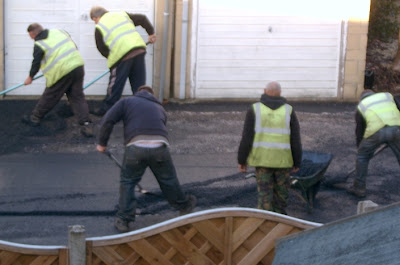

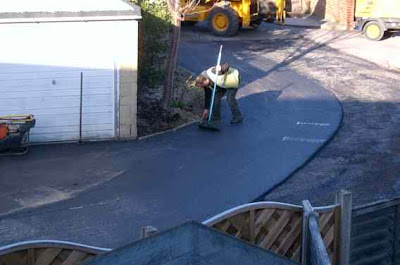
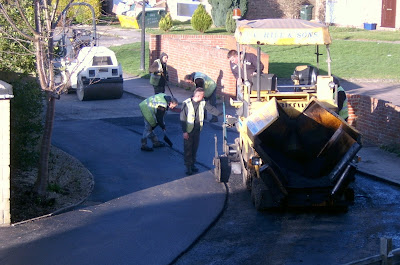
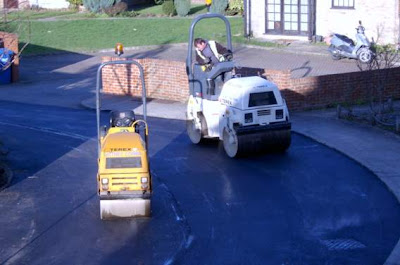
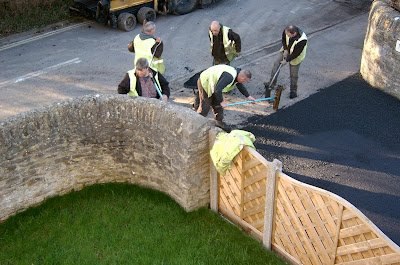
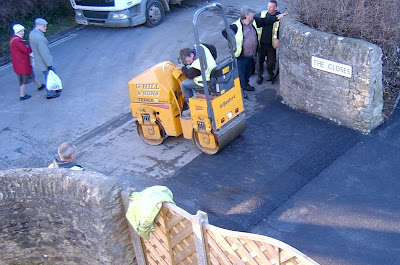
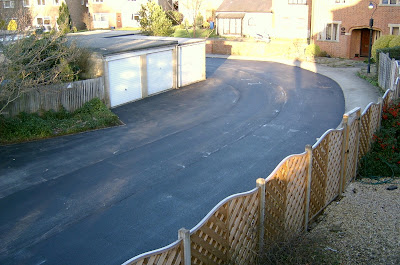

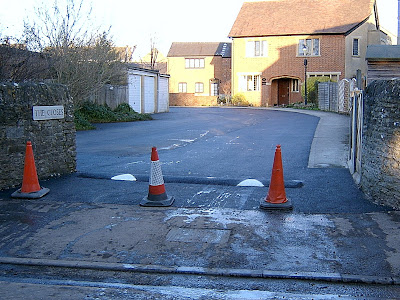
The Closes Kidlington, Oxfordshire, England, UK. Edited by The Closes Management Company.
The Closes existed as a substantial L shaped track in the garden of the Manor house now known as Manor Court, showing on plans dating back to the 1930s, and must have existed prior to that, perhaps back to when the Manor was built. It led to and past a ramshackle arrangement of add-on cottages and outhouses to the rear of the Manor house. These have now gone, to be replaced by various rear extensions to Manor Court. There was also a duck pond where the garages are, greenhouses where Nos 1-5 now are, and orchard trees where the start of Home Close is today.
In the 1990s the roadway was sold, together with the flats known as 1-5 The Closes, to a management company set up and owned by the owners of the leasehold flats there. There are apparently rights of way across the road for other people who live adjacent to the road: a series of houses front and rear and the flats in Manor Court and in 1-5 The Closes.
During the 1960s part of the Manor house (85 High St) garden on the North and Western edges was sold off and a new road created called Home Close. In the same decade a row of houses was built at the back of the gardens of Manor Court, and later some houses were built in front of the manor house and some flats alongside where greenhouses used to be, now on the corner of Home Close and High Street. Garage blocks also appeared. All of this reduced the size of Manor Court's garden at the rear to a large lawn, fenced in from The Closes itself. The road as it is now was made in the 60s.
In the 90s the Manor House itself was lived in by just one family of four, a Pentecostal Minister, his wife and two children. Services were held in a small hall at the back of the house, now number 5 Manor Court. The Minister and his wife owned the freehold of the adjacent block of flats 1-5 The Closes and the actual roadway called The Closes. They sold the whole lot in the 90s to a property developer who part converted the Manor House to flats and then went bust. Another firm picked up the work, completed and sold the flats, and then went bust themselves.
Because of new laws intended to encourage self ownership and management of blocks of flats, the Freehold of the block of leasehold flats now named Manor Court was offered to the holders of the leasehold flats to buy collectively, but sadly they did not take the opportunity. The Freehold in the adjacent block of modern flats 1-5 The Closes was offered to the leaseholders in that block, and the offer was taken up. Those leaseholders set up a company called The Closes Management Company to own the Freehold, themselves each having a share in the Company. Thus they became their own Landlord. The Freehold of Manor Court went to a private Landlord who was apparently offered the actual roadway, but declined. The roadway was offered for sale instead to those in 1-5 The Closes as a bundle with their block's Freehold. Thus the road came into the possession of The Closes Management Company Ltd.
The road runs off Home Close and runs East and is directly behind the block of flats called 1-5 The Closes, it then turns 90 degrees North and leads to the garage blocks and a row of houses. This row of houses is largely separated from The Closes itself by the car park of Manor Court (which used to be the remaining garden of Manor Court prior to conversion to flats). There exist Rights of Way dating from the 1960s, across the road to houses and garages and new Rights of Way dating from the 1990s for the flats in Manor Court, variously to reach garages and the Manor Court car park. Manor Court itself fronts the High St but there is pedestrian only access there.
Who is responsible for maintenance of a Right of Way?
Any road or pathway can obviously only be built and subsequently maintained by its owner, the owner of the land concerned. However the responsibility in law for covering the cost is shared by those who have a Right of Way over it, each paying a reasonable proportion. The owner is not required by law to keep the area of land that has a Right of Way over it in any particular condition and indeed is perfectly entitled to plough it if he wishes!
Who has a right of Way?
Anyone whose deeds for their property contain a written Right of Way over a piece of land has that specified Right of Way. This will generally contain a requirement that the benefiter of the right of way pays a reasonable proportion of the upkeep of it. Although even when this is not mentioned the liability still arises in law. One can hardly expect to get something for nothing, for the owner to provide you with a free ride.
How do Rights of Way work in general?
A Right of Way is a contract between two parties, the party owning the land concerned, and the party needing the Right of Way, usually to get to his own property. It exists in two halves, a mention in the deeds of the party having the benefit of the Right of way, normally for access to his property. It might say "A right of access on foot or in a motor vehicle over the land shaded [colour] and a right of way on foot only on the parts shaded [other colour]" It might mention times, or purposes for which you or others might be there. It will also say something like "on payment of a reasonable proportion of the cost of upkeep or maintenance". Even if it does not mention payment of upkeep, Common Law makes this so.
The second half is in the deeds of the party owning the land. Here it will list the Rights of Way that apply, in detail or sometimes barely at all. Rights of Way can only be granted by the owner of the land, frequently a developer, who may subsequently sell off the roadway concerned, as has happened in our case.
If I have a Right of Way do I own a share of the road?
No not by dint of the Right of Way. You have a right to pass over the property, normally to access your property.
Does having a Right of Way mean I can park there?
No, that is a different thing and you would need a licence from the owner in order to park on the area concerned. A Right of Way is exactly what it says. ‘Way’ meaning journey or passage, not storage, parking, waiting, or dallying. In The Closes we allow parking where it does not interfere with others' use of the road as a Right of Way and where it does not use the reserved parking spaces for 1-5 The Closes (who are licenced to park on The Closes) on the left hand side when entering The Closes. We cannot guarantee parking will always be available, now or in the future.
Can I give up the Right of Way and thus avoid payment of maintenance costs?
Some you can, some you can't even if you want to. Giving up a Right of Way would mean one could not access, and therefore would be unlikely ever to be able to sell, any property that requires the Right of Way in order to access it.
Can the road be adopted by the Council?
For them to do so the road must be of a specified standard, with the correct construction, surface, footpaths, street lighting, drainage. If the current owners wanted to get the road adopted they would have to bring it up to this standard before any adoption. This would be far more expensive than merely repairing the existing surface. Even then, the Council might refuse.